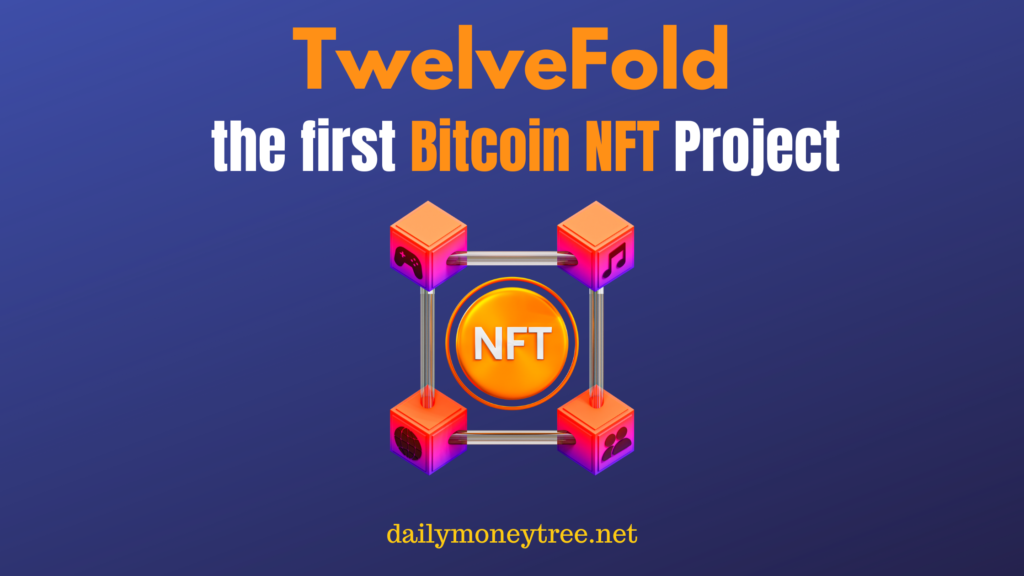The history of bitcoin, Satoshi Nakamoto, and blockchain have all become household names that push us to the limits of our way of seeing global currencies.
As popular as its origins, Bitcoin has also become famous for the price swings that often make headlines and grab the attention of financial traders. It also led to the creation of other digital currencies such as Ethereum, Ripple XRP, Litecoin.
Bitcoin also led to the creation of other cryptocurrencies which came into being when nodes chose not to upgrade to the latest protocol, creating a new currency from the old Bitcoin protocols, such as Bitcoin Cash ABC ( BABUSD ).

When and why was Bitcoin created?
Bitcoin was created in 2009 as the first decentralized currency that works with blockchain technology.
First mentioned in a white paper published by a person under the pseudonym of Satoshi Nakamoto, Bitcoin promised the ability to conduct transactions without government intervention, relying on digital signatures and digital coins instead of centralized ones issued by the government. All transactions are stored on a publicly accessible ledger, ensuring their transparency.
Miners, individuals who voluntarily offer their personal computing power to the network to keep it running, are paid in Bitcoin and have a say in new protocols that are adapted to the blockchain network. This allows them to work as a kind of central bank, seeking the best interest of digital currency as a collective.
Decentralized protocols and the Bitcoin blockchain require all nodes to verify a transaction. As these computers are spread all over the world and run by various individuals, it is considered to be very difficult to hack or bribe.
This system is considered safe by many and has continuously captured the interest of the public since its creation. There have been times, like in 2017, when Bitcoin rose 740% in 5 months, reaching $ 19,807 before plummeting from 69% to $ 5,967.
While Bitcoin is well known among traders for its price swings, many believe this leading digital currency is here to stay.

The History of Bitcoin – How is Bitcoin different from other cryptocurrencies?
Even though Bitcoin is the original digital cryptocurrency, more have been created since then. Still, Bitcoin has managed to remain unique in several ways.
Uses
Since 2009, other cryptocurrencies have been developed with the potential to manage digital economies. They have focused on developing digital contracts and services that can be paid for with their specific digital currencies.
Bitcoin has remained a form of multi-platform currency. Without being limited to use on specific platforms only dedicated to Bitcoin, this cryptocurrency can be used to make purchases anywhere in the world where it is accepted.
Bitcoin made headlines in 2020 when Paypal announced that this popular currency will be recognized as a payment on their platform.
Mining
Bitcoin is powered by individuals offering everything from single computers to full server farms to keep the main ledger up and running.
In return, miners receive a predetermined amount of Bitcoin in exchange for the number of transactions they approve. As more Bitcoins are created, ‘Halving’ events built into the protocol occur every time 210,000 blocks are processed.
It is called a halving event because the amount of Bitcoin a miner receives for processing a block becomes half when it crosses these thresholds.
In comparison, Ripple XRP ( XRPUSD ) shreds coins every time a new transaction is verified, allowing their validators to be paid with any form of payment they prefer.
Verify
The Bitcoin network requires that all active nodes be able to verify the same transaction and share their ledger with all other users on the network. This keeps the system transparent and harder to compromise.
While this isn’t just a Bitcoin phenomenon, it’s something other digital currencies, such as Ripple XRP, have followed, tapering their rules to reduce processing times.
One of the most significant downsides of Bitcoin is the long verification time, which can take an average of 10 minutes. In comparison, the Ethereum network takes around 13 seconds and Ripple XRP takes around 4 seconds to verify transactions.
Availability
Bitcoin has a maximum amount of 21 million coins that can be mined or created. Once this limit is reached, Bitcoins can no longer be created and miners will be able to collect transaction fees for their work.
In comparison, Ethereum ( ETHBTC ) has no limit on the number of coins that can be mined, while Ripple XRP created 1 billion coins in its inception and destroys a small amount with each transaction.
While there are differences between each type of cryptocurrency, Bitcoin remains the preferred tool for traders. All cryptocurrencies are extremely volatile and subject to various market factors.
The History of Bitcoin – Price Evolution
The first exchange rate was on October 5, 2009, and set the value of one dollar at 1 309.03 BTC.
Bitcoin reached $ 1,000 for the first time on November 27, 2013. New historical records were reached on December 17, 2017, reaching $ 20,000 per Bitcoin.
The value then plummeted rapidly, falling below $ 8,000 in February 2018 and stabilizing at around $ 6,000 for the rest of 2018. Since 2019, the value has fluctuated from a low of around $ 3,500 in January to over $ 40,000 in December 2020.
On February 8, 2021, after Tesla’s purchase of bitcoin for a billion and a half, it reaches its highest historical value, exceeding $ 64,800.
The History of Bitcoin – Market developments and regulation
Some commentators raise doubts about the real technical possibility of blocking anonymous cryptocurrency exchanges on the internet.
The restrictions would be motivated by the activity of criminal and terrorist organizations in anonymous and crypto exchanges, by the risk of the numerous and small savers who buy cryptocurrencies as a safe haven or to earn on price changes, by the instability created by the few large investors on the stock market.
The measures vary from the path of self-regulation of the sector with the creation of national registers of authorized operators to the suspension of securities on the stock exchange, prohibition of anonymous transactions reserving them for those who have an authenticated bank account, to the blocking of credit cards.
Another issue is the ownership and control of money, and of the wealth exchanged in Bitcoin without passing through traditional banking investment channels.
The cryptocurrency is issued by operators sometimes listed on the stock exchange, but who do not own the value introduced into the trading circuits, and who “are out of control” because they operate in a multinational context and are not in themselves influenced by the monetary policy instruments of the central banks (a rate hike, etc.).
Properly, credit cards cannot be used by users to make direct purchases of goods sold in cryptocurrencies as is possible with a foreign currency: first, the cryptocurrency must be purchased by depositing it on a virtual account, from which it is then possible to trade.
The Lloyd Group and Bank of Scotland have blocked their customers from purchasing Bitcoin, following the American Citigroup, Bank of America, and JPMorgan, while the May government intends to legislate on the matter.

The History of Bitcoin – Generating Bitcoins
The Bitcoin network creates and distributes a certain amount of coins in a completely random manner approximately six times an hour to clients who actively participate in the network, i.e. who contribute through their own computing power to the management and security of the network. itself.
The business of generating bitcoin is often referred to as “mining”, a term analogous to gold mining. The likelihood of a certain user receiving the coin reward depends on the computational power he adds to the network relative to the total computational power of the network.
From a technical point of view, the mining process is nothing more than an inverse hashing operation: determining a number (nonce) such that the SHA-256 hash of a set of data representing the block is less than a given threshold.
This threshold, called difficulty, is what determines the competitive nature of bitcoin mining: the more computing power is added to the bitcoin network, the more this parameter increases, consequently increasing the number of calculations on average needed to create a new block and thus increasing the cost of creating it, prompting nodes to improve the efficiency of their mining systems to maintain a positive economic balance.
This parameter is updated approximately every 14 days, sizing itself so that a new block is generated on average every 10 minutes. The nodes that carry out the mining process are generally called miners.
Transaction costs
Considering that miners can decide independently which transactions to include in a block, those who want to send bitcoins will have to pay a transfer fee, of variable value, to incentivize the choice of their transaction.
Depending on the amount chosen to be paid as a transfer fee, the transfer will take place in more or less time. This mechanism constitutes an important incentive for miners, and will allow them to continue with their business even when the difficulty of generating bitcoins increases or the amount of reward per block decreases over time.
Miners collect the transaction fees associated with all transactions in their dedicated block.
Stores that accept bitcoins
In the world there are more than 14,000 commercial activities, including shops, professionals and businesses of all categories, which accept payments in bitcoin.
The main categories are those of information technology, catering and tourism.

The history of Bitcoin – Conclusion
When we take a close look at the history of bitcoin the one thing that stands out as an undeniable fact is that bitcoin (and cryptocurrency in general) is an unprecedented global phenomenon that not a single living soul could have predicted.
Although most people (including myself) don’t fully understand what cryptocurrencies are, and how they work, everyone is witness that people have been made millionaires, or lost fortunes trading with bitcoin.
The cryptocurrency market is volatile, uncertain, and tricky. Maybe those are the same reasons while it’s so appealing to start trading with crypto. There’s a certain gambling factor involved that draws people in. Something exciting and upredictable about trading with cryptocurrency that just makes you want to take that leap into the unknown.
I’m aware that this article is a little “dry”, and too technical, even boring, but that’s the only way we can talk about cryptocurrency. The facts are what they are, no way around it.
To your success!
S




